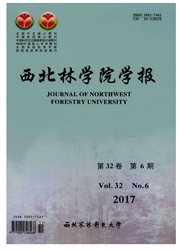

 中文摘要:
中文摘要:
用落叶松-杨栅锈菌(Melampsora larici-populina)菌系Gl052和Sb052分别接种抗病川杨(Populus szechuanica)与感病太白杨(P.purdomii)叶片,对叶肉细胞核进行荧光染色观察及基因组DNA Ladder条带检测,初步探讨杨树与锈菌互作过程中的寄主细胞程序性死亡进程。结果表明:抗病品种川杨受落叶松-杨栅锈菌侵染后有过敏性坏死现象,DNA Ladder检测发现有降解的DNA小片段,染色观察发现接种0.5dpi细胞核开始发生变化,3~4dpi细胞核裂解,7dpi细胞核消失,表现出明显的细胞程序性死亡特征,在DNA电泳图谱上观察到明显的梯状DNA条带。感病品种太白杨受该叶锈菌侵染后未检测到降解的DNA小片段,荧光染色观察细胞核也未明显变化,未明显表现出PCD特征。
 英文摘要:
英文摘要:
Disease resistant variety,Populus szechuanica and susceptible variety P.purdomii were inoculated with Melampsora larici-populina isolates Gl052 and Sb052,respectively to investigate the process of programmed cell death(PCD) of the host cells during the interaction between poplar trees and rust fungi by the observation of fluorescence staining of mesophyll nucleus and detection of DNA ladder band.Hypersensitive necrosis occurred on the disease resistant variety P.szechuanica.The nucleus began to change at 0.5 dpi(days post inoculation),cracked at 3 to 4 dpi,and disappeared at 7 dpi,which represents typical features of PCD.Meanwhile,the DNA ladder bands which display the DNA degradation were observed.For the susceptible variety,P.purdomii,no obvious features of PCD were observed(no small degradated DNA fragments were detected,and no obvious changes occurred in the mesophyll nuclei after staining).
 同期刊论文项目
同期刊论文项目
 同项目期刊论文
同项目期刊论文
 期刊信息
期刊信息
